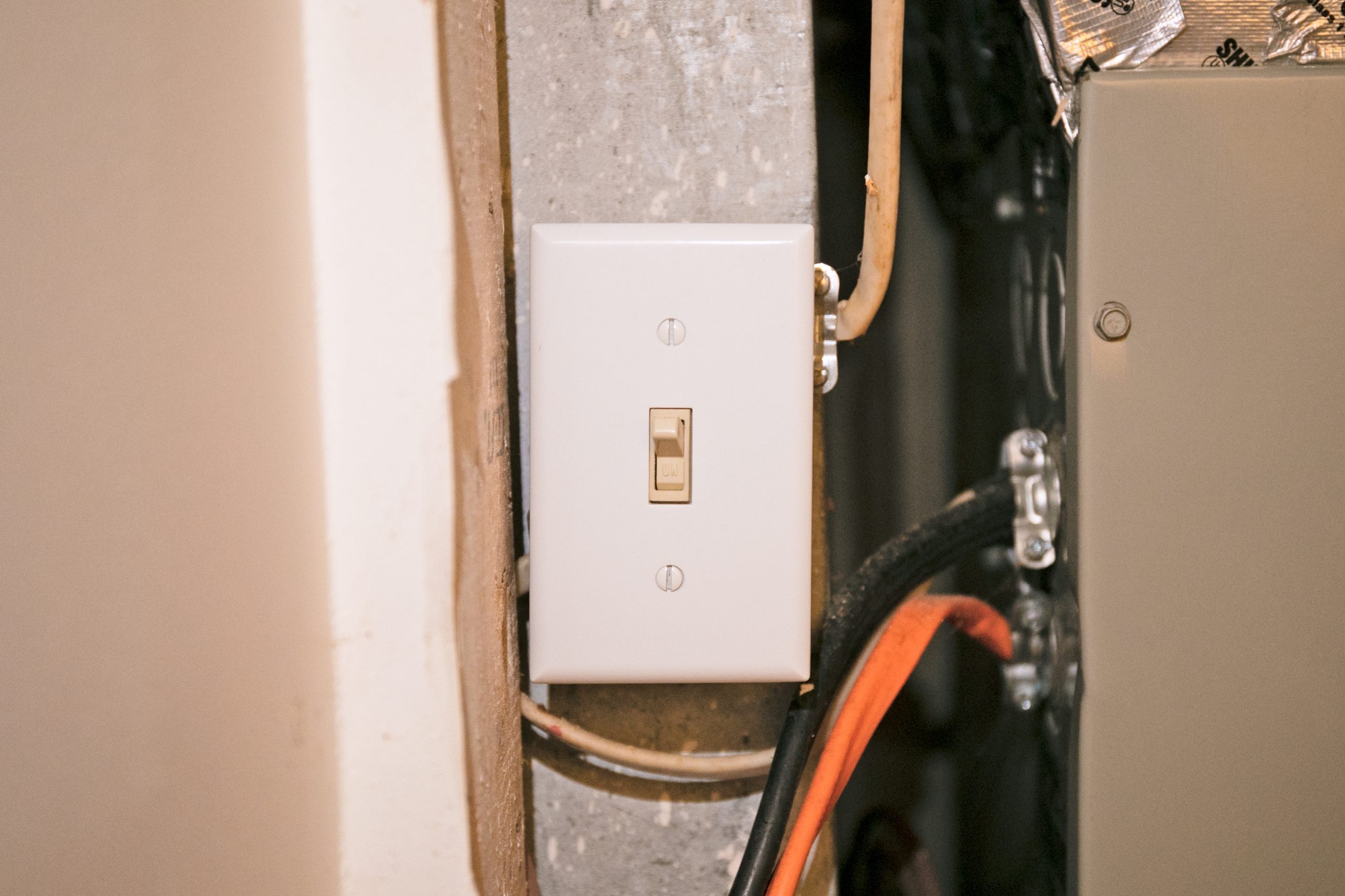You know that switch on or near your furnace? We'll tell you what it's for (hint: it's power-related) and how to use it.

This Is What That Furnace Switch Is For

It’s a bitterly cold and stormy holiday weekend, so Murphy’s Law dictates that your furnace will go on the blink. If this happens, what should you do?
If you’re not fortunate enough to have a personal HVAC (heating, ventilation and air conditioning) professional on speed dial when your furnace won’t fire, save time, money (and your weekend) by learning about the mysterious and always useful furnace switch.
On This Page
What Is the Furnace Switch For?
Michael Clark, founder of Pulled.com, a home management platform, says to look for the furnace switch, AKA the power disconnect switch. “(It) often looks like a regular light switch,” he says.
How To Locate the Furnace Switch?
Most of the time, it’s easy to spot. Clark, a contractor, says you’ll find it on the unit or nearby. “(It) can often be installed on a nearby wall, since electricians often run the wiring for the switch before the furnace is installed by an HVAC technician,” he says.
If installed correctly, the switch should remain in the ON position. However, Clark says, “Because the switch can sometimes be mistaken for a light switch it can sometimes be turned off accidentally.” If you search online for “child safety light switch protective covers,” you’ll find switch covers and toggle guards that can help keep your furnace switch on the ON position.
Note: In most states, building codes for new construction require the switch or circuit breaker serve as a disconnecting method. It must be located within sight of the furnace. When servicing the furnace, the electrician must be able to see the switch. Also, learn about the furnace pressure switch.
When Would I Use My Furnace Switch?
Here are some reasons to use your furnace switch:
- To turn on the power to the boiler;
- To turn the power off when repairing or maintaining the furnace;
- To power down during severe weather events (hurricanes, tornadoes, earthquakes, etc.)
Once you’ve located the switch, take the following simple troubleshooting steps to determine reasons why your furnace may not be blowing heat.
Step 1
Make sure your home’s main circuit breaker hasn’t been tripped by an electrical outage or blown fuse. If power is flowing to the home, go to Step 2.
Step 2
Make sure the furnace switch or circuit breaker is in the ON position. If the switch is ON and your furnace is still on the fritz, skip to Step 3. If the switch was OFF position, turn it ON, then OFF and ON again. Wait for the furnace to reset. (This could take up to five minutes). If after waiting the recommended time the furnace is still not operational, go to Step 3.
Step 3
Ask yourself the following:
- In older propane or natural gas furnaces, is the pilot light lit?
- Is the furnace out of fuel (natural gas or propane)?
- Do you see an error code or flashing lights that could indicate a motor malfunction?
- Have I changed the backup batteries in the thermostat recently?
- Does the air filter need to be replaced?
If after going through the above list your furnace still isn’t heating up, it may be time to call an HVAC repair person to help. While you’re at it, get to know the difference between a boiler and a furnace.



















